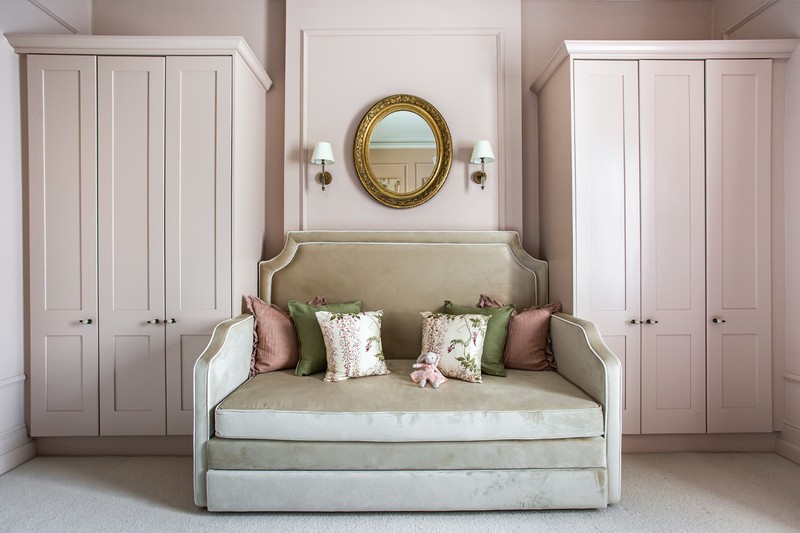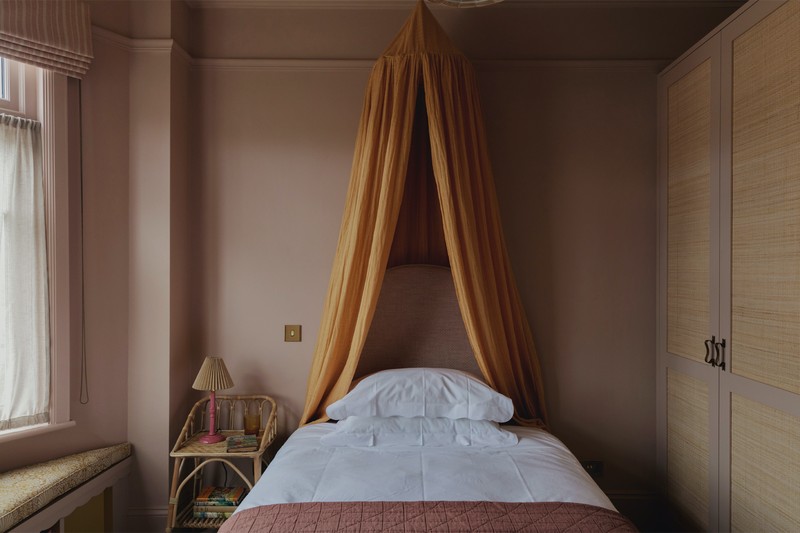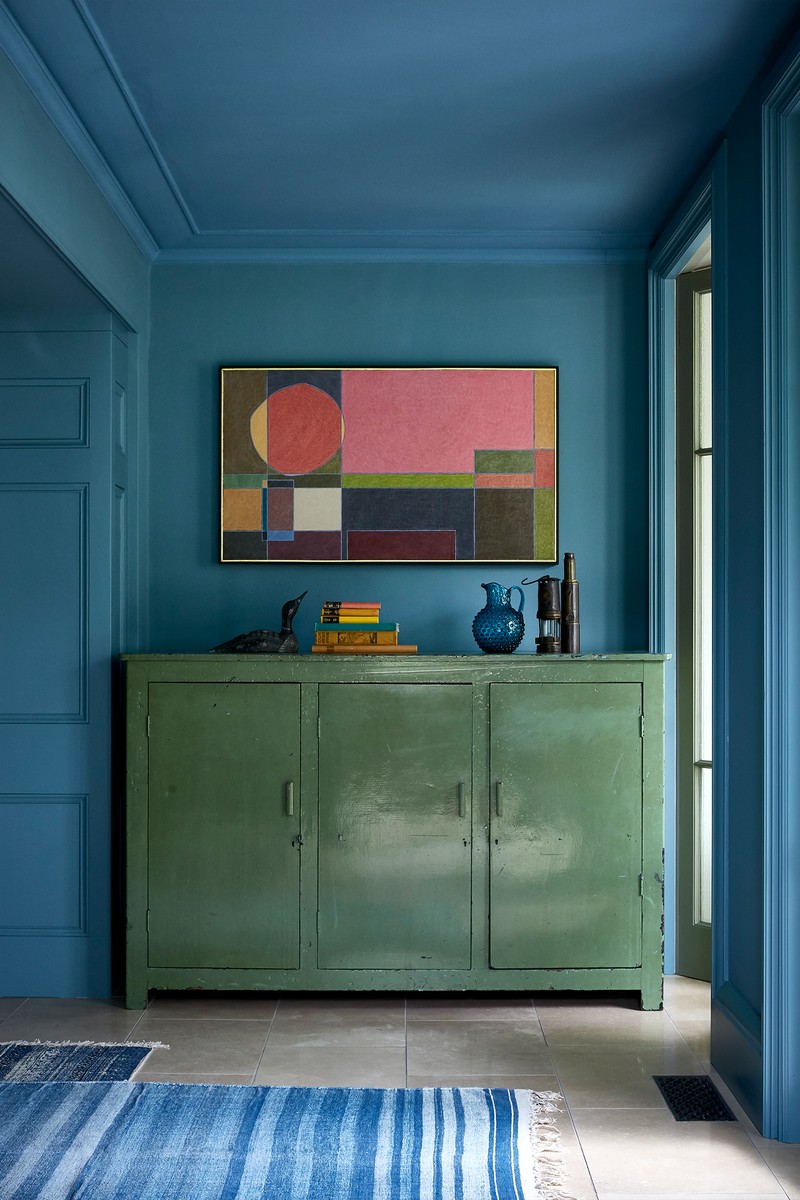Trend Watch: Colour Drenching
What Is Colour Drenching?
“Colour drenching is essentially choosing one saturated colour and applying this to multiple surfaces within a space. That could mean applying it to the walls, woodwork, the ceiling or even the upholstery. It creates a very cosseting, cosy feel and acts as a great base for patterns and artwork to be layered on top.” – Tiffany Duggan of Studio Duggan
“Colour drenching signals a move away from white woodwork and skirting and towards a more contemporary, cohesive scheme that feels considered. It creates enveloping interiors, allowing the colour to remain the focal point and certainly makes a strong design statement.” – Ruth Mottershead of Little Greene
Where Does It Work Best?
“Colour drenching works equally well in both modern and traditional homes – it can be a smart way of making a room with period features feel more contemporary.” – Tiffany
“It’s a great way to pack a big punch, particularly if the natural qualities of the room are a little underwhelming. It’s a useful trick for a small room or a room with a low ceiling, because if you paint the walls and ceiling the same colour, you can’t see where one starts and the other stops, thereby making both seem bigger.” – Nicola Harding of Nicola Harding & Co
“The beauty of colour drenching is it can be applied to a variety of spaces. It can emphasise the size of the space and create something that lifts the mood and feels really engaging, inviting and contemporary.” – Ruth
Do Certain Colours Work Better With More Or Less Natural Light?
“It’s important to choose colours that speak to you, ones that make you feel happy and energised or tranquil and serene. Before making your final decision, paint out some samples to see the effect of the light in your room on the colour. South-facing rooms can make colours feel warmer and more intense, while north-facing rooms can make rooms feel cooler.” – Ruth
“North-facing rooms can feel cold, so it’s best to use warmer tones to balance this out – a sunny yellow, such as Farrow & Ball’s ‘Hay’, would be a great choice, as would a warm terracotta such as 'Tuscan Red' by Little Greene. In a sunnier, south-facing room, the world is your oyster – they look great in paler hues but can take stronger, bold colour really well too.” – Tiffany


So It Doesn’t Always Need To Be A Bold Colour Then?
“No, but you need to choose something that’s definitely a ‘colour’ as opposed to anything too neutral. Bolder colours are beautiful and punchy when they’re used in this way, but you can still achieve a dramatic look with a pale blue or pistachio green, for example.” – Tiffany
“Colour drenching can work with any colour, from soft muted pastels to deep intense shades, but it’s particularly effective when you use mid-strength tones, in one or two very closely related colours, such as Little Greene’s ‘Garden’ , ‘Etruria’ and ‘Giallo’, all of which work beautifully together to create an enveloping cohesive space that allows colour to be the focal point.” – Ruth
And Do You Use The Same Exact Shade All Over – Including Woodwork Etc?
“In its truest sense, colour drenching means sticking with one tone, but there aren’t any strict rules. A slightly deeper tone on the woodwork and a slightly lighter tone on the ceiling could work beautifully. Choosing the same colour in different finishes is another way of adding interest but maintaining the strength of the look. In a small, cosy and intimate room, I would treat the ceiling with the same colour. In a larger space this may feel a little oppressive – if so, you could opt for a paler or darker tone, and the same saturated effect could be achieved by choosing a sofa, for example, in the primary colour. The floor should be a contrast to the walls. Colour drenching works really well with pattern, so a timber floor with a bold patterned rug or kilim would be a great choice.” – Tiffany



What Kind Of Paint Finishes Work Best?
“Either gloss or matte paint work well, depending on the desired effect. Full-on gloss produces a very maximalist, decadent vibe and is great for smaller spaces. Matte paint lends a softer feel and would usually be better suited to larger living rooms and bedrooms. If you have a living room with a low ceiling, however, there’s nothing to say you can’t paint the walls matte and the ceiling in gloss – as long as it’s in the same colour. To introduce more texture, use a grasscloth wallpaper with a colour matched ceiling and woodwork.” – Tiffany
How Does Lighting Fit Into All Of This?
“You need lots of light and shade to keep the room interesting. Really consider what you are lighting and why – don’t just try to blanket the entire space in one big pool of light. For example, a cosy corner with an armchair needs a floor lamp or table lamp, and artwork needs to be specifically lit. One thing to bear in mind is that colour drenching doesn’t work that well with spotlights if they are not the plaster-in kind. If your ceiling is peppered with spots, it might be worth changing these or keeping the ceiling pale and using the other surfaces, like the walls, to create the same bold effect.” – Tiffany
Finally, How Should You Furnish A Colour-Drenched Room?
“You need to provide a little balance with the furniture – this is where adding some contrasting colour and/or interesting texture is a good idea. For example, if you have chosen a warm aubergine or moody pink, a green sofa would work perfectly. If you have gone big and painted the ceiling as well as the walls and woodwork, a contrasting rug would be a good choice. Do look for patterned fabrics, bold artwork and interesting accessories to layer on top of your base and to avoid the room appearing flat. This is a bold look, so embrace it!” – Tiffany
For more visit NicolaHarding.com, LittleGreene.com and StudioDuggan.com
DISCLAIMER: We endeavour to always credit the correct original source of every image we use. If you think a credit may be incorrect, please contact us at info@sheerluxe.com.


